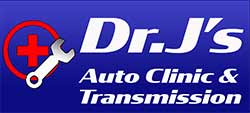Engine Repairs and Tune Ups
Vehicle manufacturers make much of the fact that their products come equipped with extended-life spark plugs that can maintain a precise gap for 100,000 miles. However, before you wait that long to replace them, you should bear in mind that spark plugs that hit the 80,000-mile marker are four-fifths worn. As the gap in the plug widens, engine performance and gas mileage begin to suffer. In addition, spark plugs that have remained in place for tens of thousands of miles have a tendency to seize in the cylinder head or the two piece designs tend to break. Once this happens, it can be potentially costly job to remove them. Since your vehicle’s spark plugs are going to require replacement sometime, better to do it sooner rather than later.
Even if your vehicle is equipped with extended-life spark plugs, you should still have them inspected approximately every 30,000 miles. During that inspection also have checked the other items that require replacement such as the air filter, fuel filter, cabin air filter, brakes, tires and the starting and charging system. These inspections, when regularly performed can help keep the vehicle properly maintained, alerting the vehicle owner of needed service and repairs. When theses services and repairs are performed, it helps maintain the value of the vehicle, the exhaust and emissions system of the vehicle, the safety of the vehicle, and the reliability of the vehicle.


We recommend that when the spark plugs are replaced, to use the same type of spark plugs that the vehicle was originally equipped with. For instance if it has platinum or double platinum spark plugs we would recommend replacement with the same style of spark plugs, since this is what the vehicle manufacturer engineered the vehicle to use.
If the vehicle is equipped with spark plug wires they should be checked at the time of spark plug replacement, when they are old and crispy just disengaging them from the spark plug can cause them to come apart. A quality set of spark plug wires can last generally around 60,000 to 70,000 miles. Again it is a good idea to replace these parts prior to a failure like a misfire. A vehicle that is running rough or misfiring can cause catalytic converter damage.
Preventative maintenance is the key, have your spark plugs inspected every 30,000 miles and replaced when the gap is beyond what is specified by the vehicle manufacturer’.
Engine Repairs and Diagnostics
Check Engine Light
When your Check engine or Service Engine Soon light comes on it is because the computer in the car called a PCM or ECM is retrieving data from a sensor that is reading out of range. This could be for all sorts of things. Anything from the sensor itself malfunctioning, to the sensor actually seeing something that is causing a drivability issue and could potentially be harmful to your engine’s longevity. The best Thing to do is get it to us ASAP so we can interface with the vehicle and determine what systems are being effected and what the urgency is.
Diagnostic Services
When we perform testing on vehicles to determine what the causes of problems are. Our ASE Certified Technicians use advanced tools to not only interface with and talk to your vehicle, but also read the data streams that the sensors are signaling. Our Goal in performing focus testing on root causes is so that you aren’t wasting time or money on guesses.
Warning Signs of an Issue
Sometimes your engine may be running poorly however the advanced systems built into the powertrain controller make minor adjustments to allow the vehicle to run inside of the parameters set by the manufacturer. If this does occur you may experience one of the issues described here
-
Engine Backfires
-
Engine Stumble or Misfire
-
Pops, Chugs, Rumble sensation
-
Poor Fuel Economy
-
Exhaust odor (more than normal)
-
Long Cranking
-
Hard Starting
If you are having one or more of these issues, give us a call today and we can get you in to see why.
